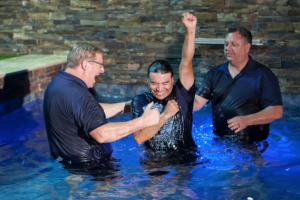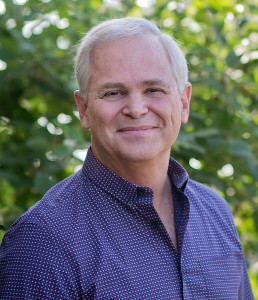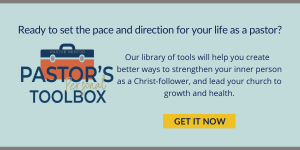
He has room to talk.
Under the leadership of Rick Warren, Saddleback Church has baptized 48,700 people. Equally impressive: 78% of the church came to Christ at Saddleback.
The numbers are so big, you may not relate. You’re just hoping for a couple of new families. It’s been awhile since anyone came to Christ at your church.
I understand that. You’re normal.
Saddleback isn’t normal, but it is reproducible. The principles that they have used work in any size or shape of church. It just takes leaders who will listen, hear, and implement. Pray. And believe.
I spent a few days awhile back at the Purpose Driven Conference at Saddleback Church. Here is a slice of what I learned at the conference about how to lead a church that wins people to Jesus.
Step One: Who are the people around you?
The first step is to have a rock-solid understanding of the people in your city.
If you have been living in your community for awhile, and have paid attention, you probably have a good sense of what motivates them. If you’re new to the area, or if you haven’t thought much about it, it’s worth your time to do some work to figure them out.
1. First, discover the demographics of your city.
How do the numbers break down for age, race, education, jobs, income, and family make-up? Then what observations do you make about your church reaching your area based on those demographics? Pick up the download below for easy sources for demographics.
2. Consider the cultural make-up of your community, too.
What are the fears, values, and interests of the people in your community? How strongly do they identify with their cultural heritage? Which cultures are predominant, and which are also represented? How transient are they?
Where I live, in San Diego County, 80% are connected to the military: marines, sailors, retired military, defense contractors, and family members. We are unusually patriotic and conservative for California. And we might be packing heat.
What observations can you immediately make about the cultural biases of the people in your city? Hardworking blue collar people? Upwardly mobile college grads? Strong ethnic ties? Military?
Take a minute to jot down your initial observations. If you would like an in depth look at what they value, do an opinion poll. The questions to ask are included in the free download with this article.
“Every church caters to a culture.” Rick Warren
3. What is the spiritual make-up of your city?
 Spanish missionaries built a chain of missions across California in the early 1800s. Our church is across the road from the San Luis Rey Mission and many of the people in my church are former Catholics.
Spanish missionaries built a chain of missions across California in the early 1800s. Our church is across the road from the San Luis Rey Mission and many of the people in my church are former Catholics.
What is the spiritual heritage of your area?
Take time to understand the people in your community so you can connect with them. Don’t assume that they are resistant to the gospel; “God has set eternity in their hearts” (Ecclesiastes 3:11). You just haven’t tapped into their hearts yet.
Step Two: Who are the receptive people?
“Most unchurched people aren’t atheists. They are just turned off and too busy.” Rick Warren
There are two groups of people we can easily identify as receptive.
1. People who are facing change.
Look for people who are in transition or under tension. They are more receptive to a new relationship with Jesus.
People can be experiencing a positive change like moving into a new home, getting a new job, or having a new baby. Or they may be experiencing a challenging change like divorce, death, job loss, illness or addiction. Whatever the source, people experiencing change are more open to new relationships and new activities.
Are there any other groups of people dealing with change that are specific to your area? We have families facing military deployment. Husbands want to get their wives settled in church before they leave for seven months; wives need support and friendship. These families are open to church and to Jesus.
2. People who are like us will be more receptive to the gospel.
The principle here is to pursue the people you are most likely to reach.
What’s your own personal demographic, pastor? What are the demographics strongly represented in your church? Those are the people who will be receptive to an invitation to your church. The first unspoken question every visitor asks is, “Are there people here like me?” If they are like you and others walking past them, they are more likely to stick.
Don’t worry about reintegrating people who have left your church. That is a strategy to kill momentum and growth. Graciously let them go.
“God has called you to feed sheep, not corral goats.” Rick Warren
Step Three: What are their needs?
 When your church reaches out to meet people’s needs, you win the right to share the love of God as the source of their help.
When your church reaches out to meet people’s needs, you win the right to share the love of God as the source of their help.
The needs around us are primarily emotional like stress, depression and worry; and relational like hurt, betrayal and brokenness. You want to offer love, acceptance, purpose, forgiveness and self-esteem.
To discern your next step in meeting needs, first see which needs you are already meeting. Ask yourself these questions:
- What ministries is my church doing to help others?
- How are people in my church involved in meeting needs in the community?
- What programs in the community could my church partner with?
- How is my denomination or association involved in meeting needs?
- Where is my heart? What would I like to do to meet needs?
- What resources does my church have available to meet a need in our community?
- Do we have a person with leadership skills with a passion for a need?
Start with what is most obvious, and put more people and resources into it.
“Your church will never grow beyond your capacity to meet needs.” Rick Warren
Step Four: What is our evangelism strategy?
Saturation evangelism is to use every available means to reach every available person at every available time.
Just-get-started evangelism is to pick a group of people who are receptive and meet their needs. As you meet their needs, tell them about the love of Jesus.
A note about financing evangelism: money spent on evangelism is not an expense, it is an investment. There will be eternal rewards that we can’t measure, but there are also financial returns when those new believers begin to give regularly.
Don’t let small vision hinder funding for evangelism ministries.
Now What?
There’s no pressure here. God hasn’t called your church to be Saddleback. But I’m pretty sure that he does want to bring people to Jesus through your church.
We have a tool that will capture these strategies and help you work out how they apply in your situation. You can find it in the Pastor’s Personal Toolbox. It’s a library of our best tools and resources — all in one place. Tap below to learn all about it, and use the worksheet to get help to take your next steps:
- A planning sheet to develop your evangelism strategy
- Links to easy, free demographics
- Opinion poll questions you can ask in your neighborhoods
- How I do an altar call
Further Reading:
Blessings!
 Hal Seed is the founding and Lead Pastor of New Song Community Church in Oceanside, CA. He mentors pastors who want to lead healthy, growing churches with resources at www.pastormentor.com.
Hal Seed is the founding and Lead Pastor of New Song Community Church in Oceanside, CA. He mentors pastors who want to lead healthy, growing churches with resources at www.pastormentor.com.
Start Here to learn more about the resources available for you at PastorMentor.

Thank you for your guidance. I’ve been trying to make it but was lacking some skills but now I’ve got it from your guidance.
We all lack skills Frederick. I’m glad you’re working to increase yours!
1,000 blessings on you!